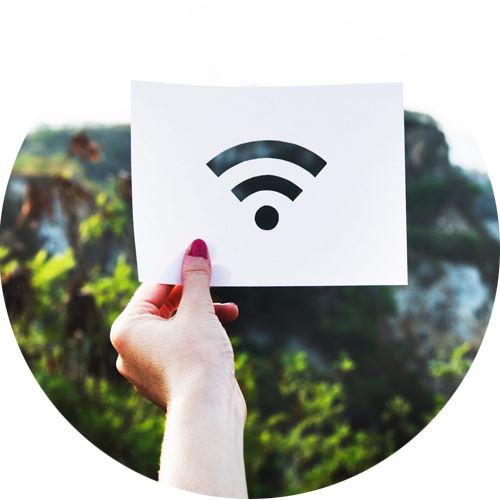The NBN should be providing a vastly better internet experience Australia wide. Yet, we continually have instances where this is not the case. So whats the deal? After upgrading the latest and fastest NBN plan, we should be able to get our Netflix without delay, or participate on that conference call without any issues! Yet, if you feel that you are not getting the speed that your internet provider promised you at the time of purchase, it is most likely due to the issues with your wireless devices rather than the provider. Have you heard or seent he recent advertisements by the NBN regarding the placement of your wireless device?
NBN is a wholesaler – they are responsible for the delivery of the cables in the ground. Why are they advising on the wireless in your house?!
Because they are getting a bad name for something that is not within their control.
Wireless networks, devices and access points are highly commoditised. It is extremely easy to get something setup with very little technology experience or know how – if everything is all good. But if you have brick walls, or some sort of signal interference, it can be a frustrating situation to sort out on your won.
Hence, our tips for a better WiFi experience!
Whenever you feel that you are experiencing low wireless signals, slow streaming, or browsing or even quality below the promised service, you must first look into the tips given below. Before jumping to buying a Wi-Fi extender or Wi-Fi booster, you need to look into existing equipment to get the most out of it. You may not need a private technician to go through these steps, you can do it yourself.
Ensure you have a modern wireless device
Having a modern device is critical. If you were around back when 56K internet was a thing – it felt fast and normal. Until something better came along.
Wireless is the same. As video quality gets higher, so does the internet bandwidth required to deliver it to your home. Ensure that both your wireless router and your devices are relatively new to be able to deliver a Seamless Technology Experience.
Lets break this down. Your wirless device will probably tell you the speed you are connected at (see below). Halve that. You lose half of the speed due to error correction. The greater the distance from the device or the weaker the signal – the lesser the speed.
At least 5Mbps is required for 1080p Netflix. And 25Mbps for 4K streaming.
Choose the central location or set up a mesh
Signal strength makes a huge difference to your reliability and your speed. If your home is quite large, multi-storied or made of a solid material such as brick or concrete – you will need to ensure a higher density wireless deployment.
What does this mean? More devices.
Having said that, you don’t want to deploy any number of random devices, you need to ensure you have a mesh that is smart enough to talk to one-another and ensure that you are connected to the best signal for your device.
There are two ways to boost Wi-Fi signals in large spaces; either you need to find a central location from where most of the spots where you frequently use the internet are nearby, and the signals can reach out to the devices.
Alternatively, you can setup a wireless network mesh and ensure that the wireless signals reach the existing dead areas through the mesh configuration. The benefit of having a mesh network over standalone range extenders is that mesh router components are designed to work together, and you will be able to communicate between one-another to move your device to the best wireless access point to ensure the best experience.
Upgrade your wireless adapter
In this case, the technology upgrade is physical hardware. You must look for an upgrade in your hardware device if you subscribe to the latest broadband technology. Using a wireless adapter for years will not be helpful in experiencing the best out of your internet service provider. Hence, you must get it checked in order to determine the compatibility and upgrade the software or hardware (or maybe both) in a timely manner.
Below is a great indicator of the standards of wireless released over time, and what the speeds are. Keeping in mind, this is not relating to when your device was released, but when the standard was – there could be some lag time. Also remember to halve the “advertised” speed.
Remember when 11Mbps was fast? No? Ok I’m just getting old then.


